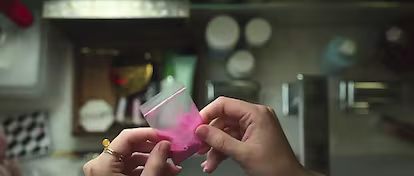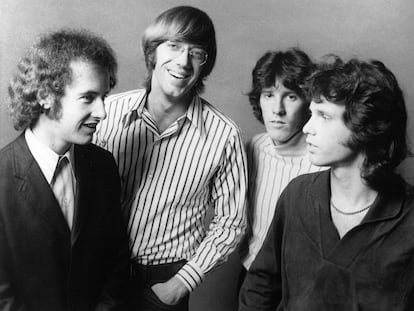Has popular culture normalized drug use?
Although narcotics have greater visibility than ever in mainstream series and music, it is not clear to what extent they are reflecting reality

The latest series from David Simon, creator of The Wire (2002-2008), is We Own This City. In it, Simon goes back and forth in time to explain how difficult it is to rein in drug use. Throughout six episodes, the viewer becomes aware of how convoluted and murky an ecosystem such as the sale of prohibited substances is in the streets of Baltimore, Maryland. “Before, in a series like Simon’s, this would have been unthinkable,” says Fidel Moreno, director of Cáñamo, a magazine about cannabis culture. “But it allows us to question the failure of the war on drugs and how that fight causes more pain and suffering for the slum communities. In the end, it is a war against the poor.”
We Own This City is just one more example of how drugs have become more visible in contemporary culture. In Euphoria (HBO Max), one of the main characters, Rue (played by Zendaya), consumes fentanyl, a very dangerous synthetic opioid. One of its derivatives, carfentanil, can be 10,000 times more potent than morphine.
However, the increased use of drugs and alcohol among youth in fiction contrasts with the latest data. Generation Z (those born between the late 1990s and 2000s) is the most sober in recent history; data from an international HBSC study, sponsored by the World Health Organization, show that today teenagers drink less than ever. Only 8% drink alcohol every week – a third of those who were their age in 2006. In addition, 76% believe that having five or six drinks on a weekend can cause problems.
A worldwide phenomenon
The presence of illegal substances in mainstream culture is not limited to the United States. Examples abound, with songs like Ex-Drugdealer, by the Spanish group PXXR GVNG, which includes the lyrics: “How much do you want? I have coke, I have M,” or Million Dollar Baby, penned by Cecilio G and Marvin Cruz: “When I was 17 I did drugs all the time / I spray-painted subways and stole Brugal rum / I’m from the streets, I’m not Bad Gyal,” in reference to the Catalan singer who calls herself “Miss Marihuana.”

The Spanish series Élite features prominently young people consuming a pink powder called tusi – also known as pink cocaine – which is part of what the Spanish Ministry of Health deems “new or emerging psychoactive substances, with effects similar to classic drugs, generally unregulated.” Approximately 400 new substances appear each year. In Spain, the main characters of the TV series Cardo live in a world that is so precarious and lacking in opportunities that they see no choice but to surrender to everything that allows them to forget. And Autodefensa, a new original series on the Spanish streaming service Filmin, presents a similar vision.
David Sucunza, a professor at Spain’s University of Alcalá and author of Drogas, fármacos y venenos (or, Drugs, Pharmaceuticals and Poisons) points out that drugs have not always been glamorous; in fact, they haven’t even always been illegal. His book is an account of the importance, relevance and value that many of these ancient anesthetics have today. “If you read literature from the 19th century, where mentions of laudanum or cocaine appear, you’ll see that they were legal. There was no cultural taboo against them. It was a time when there were hardly any drugs to mitigate diseases,” confirms the researcher. Today, it’s still to be seen if this new candor when it comes to drug use is encouraging it, reflecting reality, or even caricaturing it. Perhaps it’s doing all at once.
Sign up for our weekly newsletter to get more English-language news coverage from EL PAÍS USA Edition
Tu suscripción se está usando en otro dispositivo
¿Quieres añadir otro usuario a tu suscripción?
Si continúas leyendo en este dispositivo, no se podrá leer en el otro.
FlechaTu suscripción se está usando en otro dispositivo y solo puedes acceder a EL PAÍS desde un dispositivo a la vez.
Si quieres compartir tu cuenta, cambia tu suscripción a la modalidad Premium, así podrás añadir otro usuario. Cada uno accederá con su propia cuenta de email, lo que os permitirá personalizar vuestra experiencia en EL PAÍS.
¿Tienes una suscripción de empresa? Accede aquí para contratar más cuentas.
En el caso de no saber quién está usando tu cuenta, te recomendamos cambiar tu contraseña aquí.
Si decides continuar compartiendo tu cuenta, este mensaje se mostrará en tu dispositivo y en el de la otra persona que está usando tu cuenta de forma indefinida, afectando a tu experiencia de lectura. Puedes consultar aquí los términos y condiciones de la suscripción digital.











































